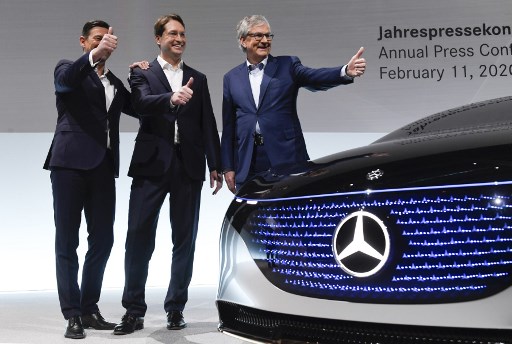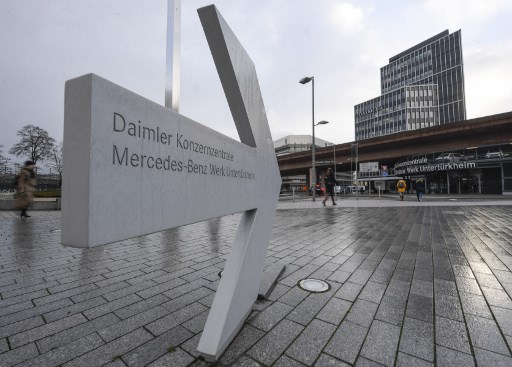
FRANKFURT AM MAIN, Germany (AFP) — Mercedes-Benz parent company Daimler said Tuesday it aims to slash average carbon dioxide (CO2) emissions from new cars sold in Europe by 20 percent in 2020, as EU-wide limits bite.
“This is a very big year for us and a year where we are taking electrification to the next level,” chief executive Ola Kallenius said in a telephone conference.
“This year alone we are looking at cutting up to 20 percent of CO2” in Europe, he added.
A major pillar of Daimler’s electric push is 48-volt hybrids, with the Stuttgart-based group targeting 400,000 units sales this year — doubling 2019’s figure.
Such “mild hybrids” include a combustion engine assisted by an electric motor, reducing CO2 output at a lower cost than typical hybrids in which battery power alone can propel the vehicle.
Meanwhile all-electric and classic hybrid cars’ share in Daimler sales should “quadruple” this year, from around two percent in 2019.
Bosses aim for them to account for more than half of vehicles sold in 2030.

From this year, manufacturers’ fleets of newly-sold cars must emit on average less than 95 grammes of CO2 per kilometre, on pain of hefty fines from 2021.
Experts predict the carmakers will have to cough up unless they massively increase sales of electric and hybrid vehicles.
Working in favour of German high-end brands like Mercedes and BMW is the fact CO2 targets are weighted to account for companies selling heavier vehicles.
That places Daimler’s actual emissions goal “slightly above 100 grammes”, Kallenius said.
In 2019, the group’s new fleet emitted 137 grammes on average.
Rival BMW, with fleet-wide output of 128 grammes last year, is also targeting 20 percent cuts in CO2 in 2020.
“We always knew 2020-21 would be a challenge for us,” Kallenius said, having previously acknowledged it was “not guaranteed” Daimler will hit the targets.
Kallenius warned that Daimler’s planned “massive” electrification will mean “cost structures significantly higher than we’ve been used to”.
The group is already hunting 1.4 billion euros of annual savings by 2022, in a cost-cutting programme including 10,000 job cuts among Daimler’s 300,000 posts worldwide.
“Our most important job in the coming years is cutting costs” as “we can’t pass the costs (from electrification) completely on to the retail price,” Kallenius said.
© Agence France-Presse







